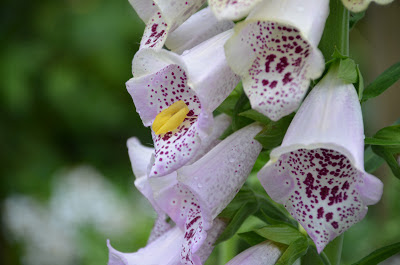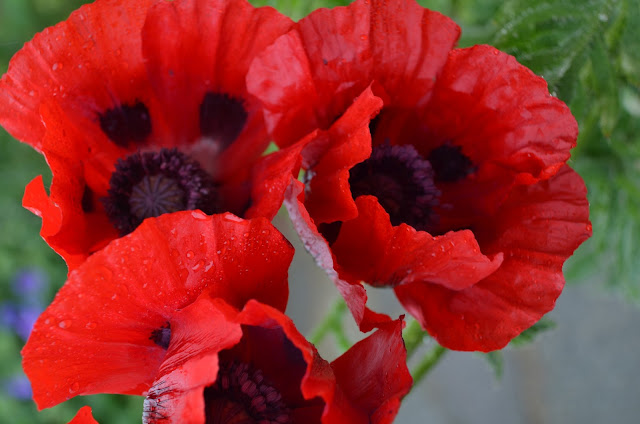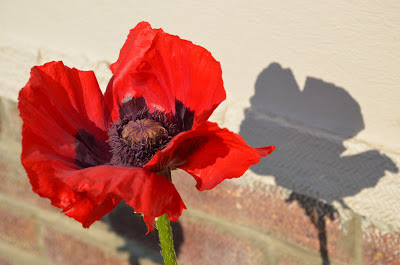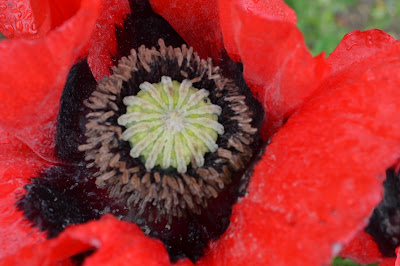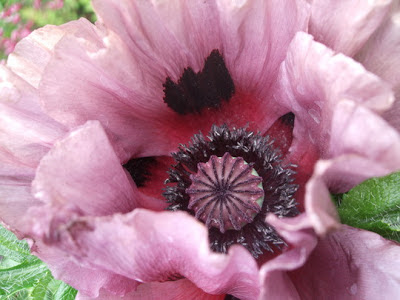 |
| Crassula ovata |
Jade plants are succulents, and as such, store water in their leaves and stems. Why? Because they have evolved in the arid regions of South Africa and Madagascar.
With little water available in their natural environment, when it does rain the jade plant will make the most of this precious resource by locking as much of it away as possible within its own body.
Equally, the roots have evolved to survive in this harsh dry environment, so provide waterlogged conditions and they will quickly deteriorate!
So. although it sounds counter-intuitive, they like very little water. In fact, too much water can easily damage the
root system and even kill a jade plant.
Therefore, it's recommended that you should only water when the leaves feel a little squishy or dried out. Sometimes it is hard to tell when this happens, so a good rule of thumb is to water just once a month in the summer and even less in the winter.
As for soil type, the jade plant will prefer a sandy or coarse soil. The best mixture is four-parts loam and one part each of sand and broken brick. Jade plants don't mind being root-bound, in fact most seem to thrive on it. When you do need to re-pot your jade, only re-pot it in a pot one size larger than the original.
 |
| Wild plant from Karoo National Park - care of www.bihrmann.com |
Jade plants enjoy a sunny location. When given enough sun, the leaves develop a reddish colour. Jades vary in size and shape, but can grow up to ten feet tall. They also make great bonsai. When old enough and if given enough light, the plant will produce a small white flower and seeds. In the summer they can live outdoors, but being a desert plant they don't like the cold, so bring them inside in winter.
If the jade plant becomes too top heavy, and is at risk of branches breaking under its own weight, try pruning some of the branches back to the first bud along the stem. This is best done in March. Alternatively, this could be caused by the plant having too small a root system. This can be attributed to watering the plant too often; the roots become lazy and don't grow. When they have less water they'll start to grow in search of more moisture.
What is a Jade plant?
As ornamental plants go, the jade plant is a bit of an enigma. Why? because it has so many names attached to it!
Not only is it often found under the two commonly seen botanical names of Crassula ovata and Crassula argentea, there are another five variety names that have been attributed to it.
Be that as it may, C. ovata is its currently agreed scientific name.
The very same issue occurs with common names. While the names 'Jade Plant' or Jade Tree' are perhaps the most popular, Crassula ovata is also known as the the friendship tree, the Chinese rubber tree or even the money tree.
 |
| Chinese money tree |
Even then there are still arguments as to whether the jade tree can really be called the money tree as another plant 'Pachira aquatica' seems to lay claim to that one by way of being the tree species that the Chinese traditionally knew as the money tree.
To make things even less clearer the Pachira aquatica has the common names of the Malabar chestnut, Guiana chestnut, provision tree, or saba nut.
Back to the common name 'money tree' which has it roots far back in Chinese history.
Chinese legend has it that the original money tree is a kind of holy tree which can bring money and fortune to the local population. It is also a symbol of affluence, nobility and auspiciousness, and can be traced back to primitive societies when the adoration of a holy tree was prevalent.
Whilst Money trees may be derived from the Sun tree myth associated with paradise, the coins link paradise with a material bounty in this world.
I think that I can confidently say that the Crassula argentea was not the tree species the early Chinese coveted.
Many people who practice Feng Shui say that having one of these plants in your home, with their small round leaves like coins, helps to bring money into your life.
In fact a wealthy employer of mine from my youth was so convinced of the power of the money tree that the larger his Crassula ovata plant became, the more wealth he would posses. He therefore forbid anyone from damaging it or removing material for cuttings in case the reduction in the size of his tree would cause a reduction in the size of his fortune.
I of course took several cuttings, two of which are still with me today.
 |
| Crassula ovata in flower |
If you really want to know what the Jade tree is then it is an evergreen, succulent plant, native to South Africa. In time, it produces thick branches and smooth, rounded, fleshy leaves that grow in opposing pairs along the branches.
The leaves are a rich jade green - hence the common name, although some cultivated varieties may develop a red tinge on the edges of leaves when exposed to high levels of sunlight.
The new stem growth is the same colour and texture as the leaves, but becomes brown and woody with age. Under the right conditions, they may produce small white or pink star-like flowers in early spring. They are a popular house-plant in northern Europe, but can be grown outside in countries that enjoy a more Mediterranean climate. Be aware though that as tough and as rugged as these popular plants look, they are not frost hardy and will need to be brought in under protection if temperatures look to drop past 6 degree Celsius.
For related articles click onto:
